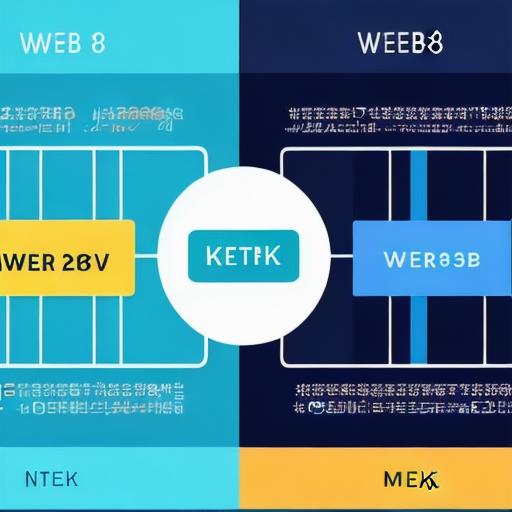In recent years, there has been a lot of buzz about the future of the internet. One concept that has gained significant attention is Web 3.0, which refers to the next evolution of the web. This article will explore what Web 3.0 is, how it works, and why it’s important for developers.
Web 3.0 vs. Web 2.0: A Comparison
To understand what Web 3.0 is, we need to first compare it with Web 2.0. Web 2.0 refers to the second generation of the web, which was characterized by the rise of social media and user-generated content. It’s focused on centralized platforms that allow users to interact with each other and share information.
Web 3.0, on the other hand, is decentralized and relies on blockchain technology. Instead of relying on a single entity to control the data, Web 3.0 allows for peer-to-peer communication and decentralized storage. This means that users have more control over their data and can share it with anyone they choose without interference from intermediaries.
Why is Web 3.0 Important?
Web 3.0 has the potential to revolutionize the way we use the internet. With its decentralized approach, it offers greater privacy and security for users, as well as more control over their data. It also allows for greater interoperability between different platforms, making it easier for developers to build applications that work across multiple systems.
One of the key benefits of Web 3.0 is its ability to enable new forms of innovation. By decentralizing the internet, it opens up new opportunities for businesses and entrepreneurs to create new products and services that were previously impossible due to the limitations of centralized platforms.
Real-Life Examples of Web 3.0 in Action
One example of Web 3.0 in action is the decentralized social media platform, Dfinity. This platform allows users to create their own content and share it with others without relying on a central authority. Another example is Filecoin, a decentralized file storage network that uses blockchain technology to allow for peer-to-peer data sharing.
Case Studies: How Web 3.0 is Changing the Game
Web 3.0 is already having an impact on various industries. For example, in the finance industry, Web 3.0 has enabled the creation of decentralized finance (DeFi) platforms that allow users to access financial services without relying on traditional banks or intermediaries. In the gaming industry, Web 3.0 has allowed for the creation of blockchain-based games that are more secure and offer greater rewards for players.
Conclusion: The Future is Here

Web 3.0 represents a major shift in the way we use the internet. With its decentralized approach, it offers greater privacy and security for users, as well as more control over their data. It also allows for greater interoperability between different platforms, making it easier for developers to build applications that work across multiple systems.
As Web 3.0 continues to evolve, we can expect to see even more innovative products and services emerge. This makes it an exciting time for developers to explore this new frontier and learn how they can leverage its capabilities to create the next generation of internet applications.
FAQs
1. What is Web 3.0?
Web 3.0 refers to the next evolution of the web, which is decentralized and relies on blockchain technology.
- How does Web 3.0 work?

Web 3.0 allows for peer-to-peer communication and decentralized storage, meaning that users have more control over their data and can share it with anyone they choose without interference from intermediaries.
